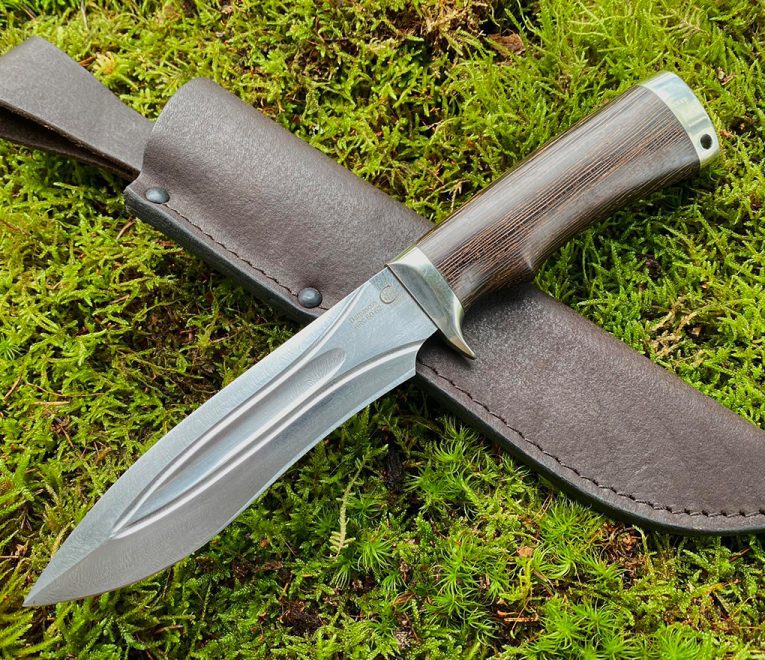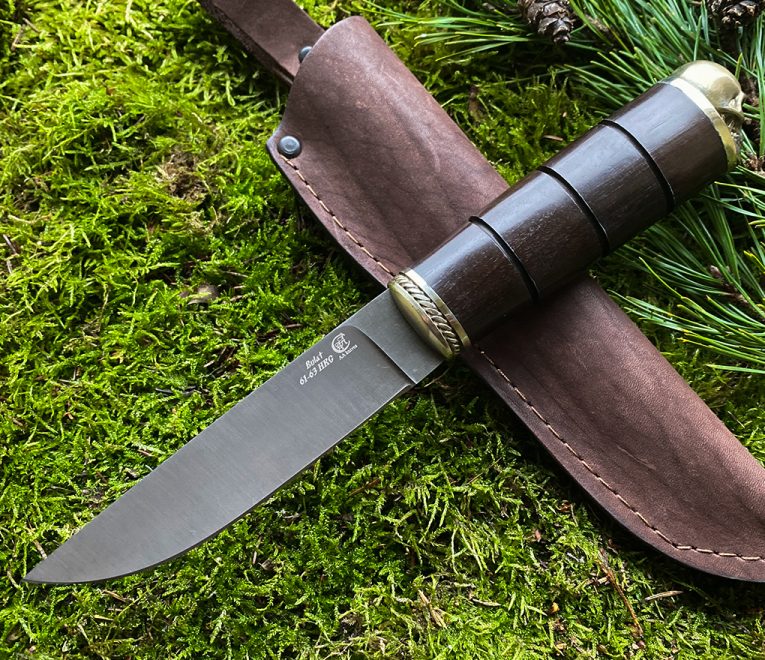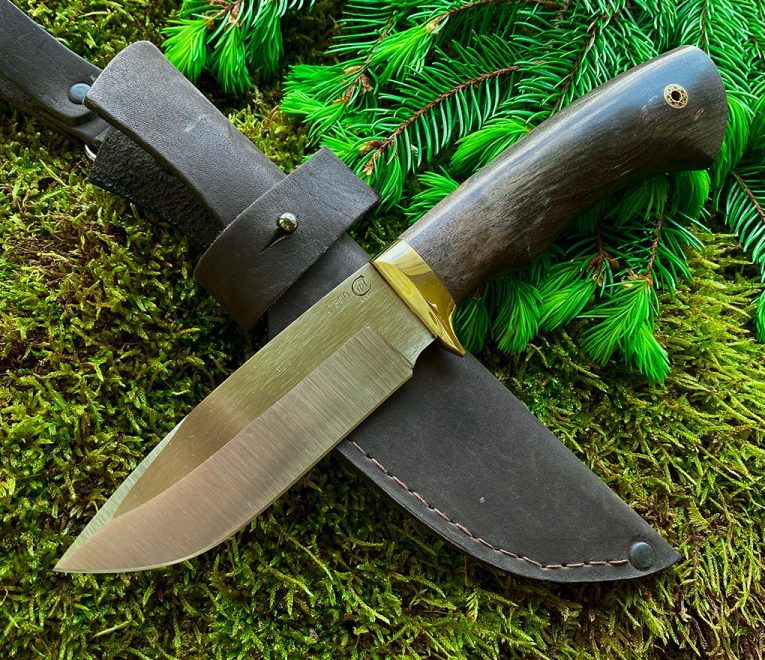Knife specifications: YAKUT
Steel: Swedish Steel Uddeholm ”Elmax” SuperClean
Hardness: 61-62 HRC
Blade length (mm): 137 / 5,39 Inch
Blade thickness (mm): 2 / 0,07 Inch
Blade width (mm): 28 / 1,10 Inch
Handle: a stabilized Karelian birch, elk horn
Overall length (mm): 282 / 11,10 Inch
Knife type: hunting, outdoor
Package: knife, sheath of leather
A distinctive feature of the Yakut knife is the presence of a groove on the blade. There are two types of recess:
- a) short, thin;
- b) wide, along the entire length of the blade.
What is this hole for?
- In ancient times, when the blacksmiths themselves obtained iron, Yakut metal craftsmen and blacksmiths from time immemorial were famous for the art of iron smelting (also smelted, bypassing the cast iron process) and making work tools, hunting. and war of steel.
The knife “Sakha” is a model, a standard of the oldest varieties of such products, this is proven by archaeological research. The Yakut knife has kept its original appearance, geometric parameters and dimensions until now, the raw material was very expensive, so they tried to save it by stretching the blade wide, making it more complete.
- In extreme conditions, at 50-60 degrees below zero, when the knife does not have a groove, it is almost impossible to sharpen and edit it, in addition, the blade with a wide fuller is thin, very sharp, and therefore, if necessary, it is easy and quick to correct it.
- When cutting carcasses, the blade with a wide groove contacts the meat mainly only on the back, the recess of the knife blade remains free, and the skin is easily removed due to the small contact area. Therefore, such a knife is especially valuable for a hunter.
- In addition, there are differences in the shape of the blades in the northern (tundra) and classic Yakut (taiga) variants. This is related to the practical side of their application. In the tundra regions, where the knife is mainly used for drilling holes in wood and leather, breaking ice, freeing skids from stuck snow, working with frozen wood and planning. The blade of the North Yakut knife is narrower, with a very narrow tip, sharpened to a blunt angle, somewhere around 30-35 degrees. Taiga knives are distinguished by a wider blade and a sharper sharpening angle – from 20 to 25 degrees, designed for cutting more game and working with soft wood. However, these differences are insignificant and rather depend on the wishes of the master who created them. The fact that the shape of Yakut knives has changed little over the last couple of centuries does not mean primitiveness or backwardness, but rather shows that over the centuries a very successful, universal knife shape has crystallized: both the blade and the handle, which are ideally suited to local conditions. In the Yakut knife, everything is subordinated to convenience and functionality. So, the blade of the Yakut knife is much more complex in shape than the blade of the famous Finnish knife.
- Suspension deserves special attention. The free suspension of the Yakut knife allows its owner to walk, sit or drive freely. The shell is usually located in the front, on the left side. This not only allows you to move freely, but also to remove the knife with one hand, resting your thumb against the sides of the wallet.
Elmax is one of the most common powder steels. Therefore, in order to roughly understand what miracles a “powder” knife is capable of, it will be enough to study the characteristics of Elmax steel. The main factor affecting the characteristics of any steel, and hence the knife made from it, is the ligature. It is the chemical elements in the composition of steel that endow it with certain properties, whether it be strength, corrosion resistance, impact strength, cutting edge resistance, and so on. Elmax steel is characterized by the following composition: 1.7% carbon, which allows steel to be classified as high-carbon and gives it increased hardness and strength. 18% chromium, which gives exceptional resistance to corrosion and increases the strength of the steel, as well as toughness with elasticity. 3% vanadium, which improves the structure of steel, making it denser and giving it hardness and strength. 1% molybdenum, which slightly increases resistance to corrosion, as well as strength characteristics, including elasticity. 0.3% manganese, which also has a positive effect on the strength of steel, its wear resistance and hardness, while not reducing ductility.
Knives from Elmax are not prone to corrosion, and almost completely. The blade of this steel is very resistant to lateral loads and bending. Powder steel has an almost perfect internal structure. Absolute purification from harmful impurities. Outstanding edge retention and relative ease of sharpening with good sharpening stones. Steel is well polished and even polished without showing the pattern. It is possible to achieve a completely mirror surface.
Summing up, we can conclude that Elmax steel is justifiably recognized as one of the best knife steels today. If you have long thought to take a knife from this material, it’s time to decide. It will serve you long and faithfully.






















 No products in the cart.
No products in the cart. 